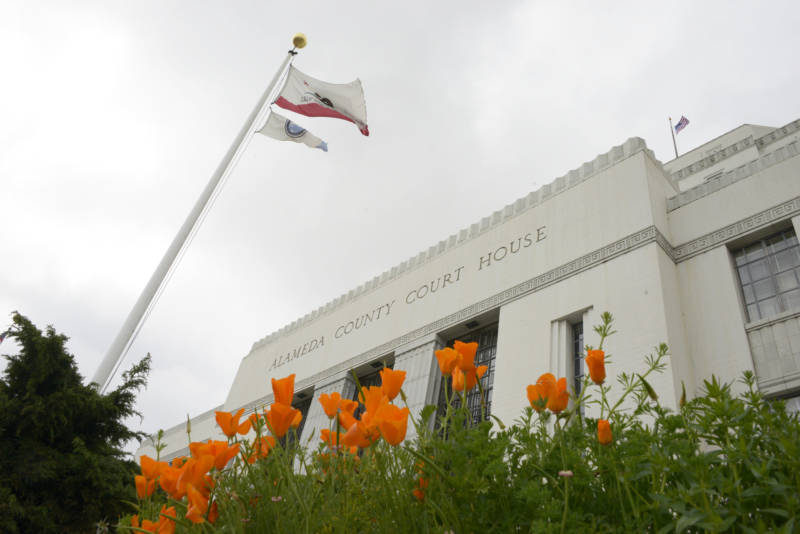Defense attorney Curtis Briggs said during lunch recess outside court Tuesday that O'Keefe's recollection of how quickly the fire spread validates the defense's arson theory — that an accelerant was responsible for its rapid growth.
O'Keefe also said he had been at a 2016 Thanksgiving gathering at the Ghost Ship, which took place on the second floor of the warehouse. Asked by defense attorney Tyler Smith if he had considered the warehouse during that gathering to be "unsafe," a "death trap" or a "tinderbox," O'Keefe responded no.
O'Keefe also recalled seeing fire extinguishers near a downstairs bathroom the night of the fire.
The prosecution called as its first witness Tuesday forensic pathologist Dr. Thomas Rogers, who performed autopsies on eight of the victims of the blaze.
Rogers, who performs autopsies for Alameda and San Mateo counties, said all eight had died from smoke inhalation and had elevated, potentially lethal levels of carbon monoxide in their blood. The defense did not cross-examine Rogers.
The prosecution has argued that Almena and Harris illegally converted the commercial warehouse into a residential art space, stuffed from floor to ceiling with flammable building materials, and didn't install the proper safety equipment, such as sprinklers, fire alarms and well-lit exits.
Rodney Griffin, who said he had once considered Almena “a brother” prior to a falling out, testified Tuesday that he had been in the warehouse prior to signing of the lease at Almena’s request to evaluate what it would take to get the empty building up to speed.
Griffin, who is not a licensed contractor, but has over 20 years of experience in construction trades, said he told Almena it would take about $3,000 to build a set of stairs toward the front of the building and about $2,000 to install fire doors.
Almena responded that the amount was “too much money, and could probably be built for less.”
Six months following Almena signing the lease, Griffin said he visited the warehouse and told Almena the warehouse was “very dangerous” and called it a “death trap,” at which Almena laughed. Griffin repeated what Almena told him at the time, "Ha. Ha. We should call it the Satya Yuga death trap." The warehouse had also been known as the Satya Yuga collective at the time.
He said three motor homes had been parked inside along with some vintage camper trailers. Griffin said Almena had moved in “so many” art works, pianos, organs, old speakers, tapestries, fabrics and wood, some he said was used to separate living areas.
Griffin also said he grew concerned after it appeared the warehouse had been "fire bombed" in September 2014. He said he visited a fire station approximately one city block away from the warehouse and told the station chief about the conditions there.
Griffin testified the station chief told him there had been numerous reports and that they were aware of the situation.
Griffin testified he felt the issue wouldn't "be properly addressed" and said he felt his concerns would be "brushed off."

